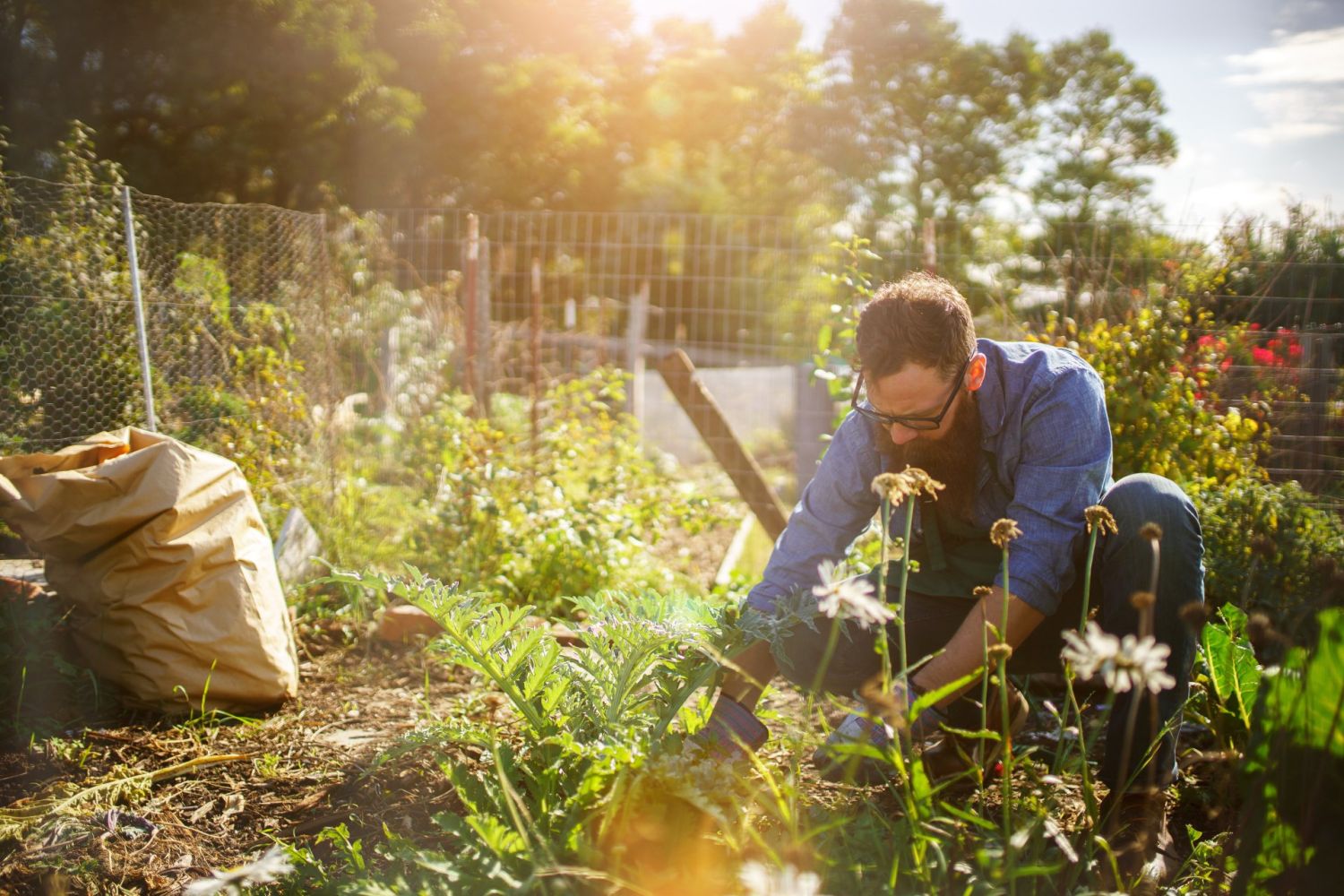In the following, we have briefly and concisely described what microorganisms can effectively do in the garden and where they are used in the self-supply garden for those who are interested, but also for newcomers. However, the topic is now very comprehensive that we refer to the information sources at the end of this article for further information.
What microorganisms do to plants:
Stimulation of the development of the root system,
Suppression of soil-borne diseases as well as “pests",
Increasing the fertilizing efficiency of organic substances,
Use as “plant food",
Transporter of living matter,
Improvement of germination, flowering, fruiting and ripening,
Increase of photosynthetic capacity,
Strengthening of the plant,
increasing the storage capacity of the harvested products and incorporating carbon in the soil (contributing to climate improvement).
Basically, the use of microorganisms in plant care is divided into two areas:
Soil improvement: we indirectly influence plant growth by adding microorganism cultures, but also by stimulating already free-living microorganisms by means of the dominance principle, because all plants are able to incorporate and metabolize living bacteria via the process known as endocytosis (Rusch, Reataver, summarized again in Pommeresche et. al).
Plant protection:
Second, by spraying with microorganism (preparations), we protect plants from diseases and “pests." But be careful: Only high-quality microorganism concentrates – diluted with water according to the manufacturer’s instructions – may be sprayed on the plants, because otherwise preparations not designed for this purpose can cause great damage to the plants if “sugar residues" or other plant residues are present, even by attracting pests or by damaging the plant by clogging the leaf pores.
Typical application on the example for vegetables and flowers in the garden
What do I need to make good soil that also works ideally for growing young plants?
Materials:
95 percent growing or potting soil (ideally organic).
5 percent Bokashi (homemade from kitchen and garden waste or as a good commercial product)
Microorganism preparation-water solution (mix EM-A with water)
Covering fleece (ideally biodegradable) or jute bags to cover the soil
Instructions:
Mix the growing or potting soil with the bokashi.
Add the EM-A water mixture so that the mixture (soil) is well moist.
Now put this mixture in a container or on a pile lying on bare ground and cover it with the fleece or jute bags so that it can “breathe".
Now let this soil mixture mature for two to three weeks. After this time it can be used for sowing or planting. Check the soil to make sure it is not too dry and also not too wet. Press it with your hand to form a “dumpling". This should, when touched, easily disintegrate again.
Preparation for sowing and planting:
Prepare the soil well with Bokashi (see above). Soak seeds (also potatoes) in diluted EM-A solution 1:500 for about half an hour to coat them with EM-A (pickle). The following empirical values apply.
Seed soaking time EM-A:water
Small seeds 30 minutes 1:500
Medium sized seed (e.g. sweet corn) 4-6 hours 1:500
Larger seeds (e.g. beans) 24-48 hours 1:500
Then allow the seed to dry. If it can be easily pressed in with a fingernail, it has absorbed the proper moisture and sufficient EM-A.
Soil preparation:
When the soil is warmer than eight degrees Celsius, work 200 grams to one kilogram of Bokashi flat into the soil.
After working the Bokashi in, water the soil with a 1:100 mixture of EM-A and water. Effective microorganisms like it moist and warm.
After everything has been watered with the EM-A water mixture, it is now important to cover the soil with straw, spoiled hay or a fleece. This will prevent the soil from drying out prematurely.
The soil organisms must now be given about ten days to prepare the soil and for the relatively low pH of the Bokashi to adapt to the pH of the soil. During this time, very important metabolic processes take place in this soil. If such soil is planted too early, the plant seedling or young plant may be damaged by an excessively acidic soil reaction.
Before and after seeding or planting:
After planting or seeding, the soil should be well watered with a 1:1000 solution of EM-A until the soil is completely soaked. The amount is basically irrelevant.
During the growth phase:
Depending on the type of plant, water with a diluted 1:100 EM-A solution every week for a month. More frequent application will not harm. At the beginning of the growth phase, shorten the watering intervals. If growth appears to be progressing well, watering intervals can be extended.
Bokashi can also be used directly as plant food, but not too much at once. It must not be given directly on the plant, but placed about 10 to 15 centimeters next to it.
Never apply EM-A in concentrations higher than 1:100. Because of the low pH, a higher concentration can cause physiological problems or yellow spots on the leaves, but especially during dry periods.
A combination of EM-A with chemical-synthetic agents should be avoided.
Brief instructions: Making your own EM-A
(quantity example according to the three percent recipe):
300 milliliters of organic stock solution (for example, from MikroVeda).
300 milliliters of organic sugar cane molasses
9.4 liters of good water
Ten liters of EM-A
This EM-A solution is made in a ten-liter plastic container that is as food-safe as possible, with a so-called fermentation bung to seal the opening airtight for outgassing during the approximately seven-day fermentation period.
Bokashi brew to vitalize, fertilize and scare away biting and sucking insects.
The so-called Bokashi brew (-soup) is used for leaf fertilization and for scaring away stinging and sucking insects (“pests"). But how do you make bokashi soup?
Put about five kilograms of bokashi broth in a water-permeable bag (for example, potato bag from the grocery store).
Place this bag in 50 liters of water (for example, in a 500-liter common plastic bucket from the hardware store or similar) for eight to twelve hours, so that nutrients and microorganisms are extracted from the bag.
Remove the bag and after this time add 450 liters of water.
To these 500 liters of Bokashi decoction, add a good handful each of fresh, peeled and pressed garlic cloves and finely chopped hot chili peppers and mix everything together well. Let the decoction thus refined stand for a maximum of 24 hours. Then strain garlic and chili peppers.
Immediately, without letting it stand any longer, spray this decoction on the planted beds in the greenhouse or outdoors using a watering can, sprayer or sprinkler.
Fermented plant extract
When fermenting various plants, their effective ingredients are bound in EM-A in order to spray or water them diluted on plants, soil or compost. In principle, all plants that are full of life and vigor can be used, including weeds. However, plants that are poisonous to humans and animals should not be used. How do I apply fermented plant extract?
Regular spraying of a fermented plant extract in a concentration of 1: 100 at intervals of five to ten days promotes healthy and vigorous crop plants and helps them to ward off diseases and “pests".
Professional tip: Adding 0.1 percent BIO sugar cane molasses as an adhesive to leaves and stems increases the effect: one liter of fermented plant extract plus 0.5 liter of BIO sugar cane molasses plus 500 liters of water. But beware: more does not help more, so in any case do not add too much sugar cane molasses. Exceeding the amount added can cause long-term damage to the plants by causing leaf pores to become too gummed up by the molasses.
Literature tips
Francé, Raoul H.: Life in the Soil/The Edaphon. OLV publishing house, Kevelaer,
Hennig, Erhard: Secrets of fertile soils. OLV Publishing House, Kevelaer,
Higa, Teruo: Effective Microorganisms. OLV Publishing House, Kevelaer,
Hiriam: 4000 years of agriculture in China, Korea and Japan. OLV Publishing House, Kevelaer,
Lorch, Anne: EM – A chance for the earth. Pommeresche,
Herwig, Humussphere – Humus, a substance or a system? OLV Publishing House, Kevelaer,
Rusch, Hans-Peter: Soil fertility. OLV publishing house, Kevelaer
Zschocke, Anne-Katharina: EM


